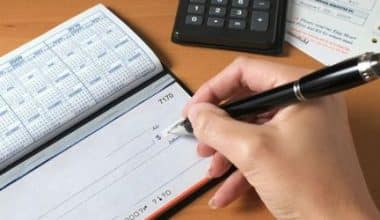When you start tracking your expenses, you might be startled to learn how much money you’re wasting in sectors where you might save money. Any non-essential cost that can be modified, reduced, or eliminated to assist in balancing your budget is considered flexible. You can even cut important variable costs by moving to more cost-effective products or service plans and keeping the product or service at a fraction of its initial cost to help you understand what to spend and what to cut costs on. We have designed this post to address flexible expenses, examples, comparisons with fixed expenses, and all you need to know.
Flexible expenses
A flexible expense is a non-essential item that can be changed or discontinued without substantial financial consequences. In contrast to fixed expenses, these are non-essential expenses. Flexible spending should be incorporated into a budget to manage an individual’s total finances. Consumer discretionary spending is a term used by economists to characterize changeable expenses.
Flexible expenses are expenses that aren’t considered fixed or set in stone and can be reduced or raised as needed. Many corporate and individual expenses are flexible in nature, in the sense that there are ways to change the amount of the expense while still staying within a budget. Understanding what constitutes a constant cost or expense can have a big impact on how successfully a person or company manages their money and sticks to their monthly budget.
Overview
When people seek financial advice, they are frequently asked to estimate their expenses, distinguishing between those that are required and non-negotiable, such as mortgage and car payments, and those that are flexible, such as entertainment costs. Cable television subscriptions, music downloads, restaurant dinners, and vacations are all examples of entertainment costs that can be broken down further.
Knowing where the money goes and dividing the flexible from the inflexible can help people deal with a budget that is strained to the breaking point or beyond. Even seemingly rigid costs like food, such as pre-cooked dinners or the most expensive cuts of beef, may have variable components. There are always more cost-effective alternatives to fixed expenses, such as buying a Ford instead of a BMW.
The modern customer appears to be confronted with an astonishing selection of goods and services offered at prices ranging from low to high. A leather handbag can be bought for $20 from a warehouse store, whereas a single Hermes Birkin bag can be bought for $40,000 to $50,000. Most people’s finances are probably somewhere in the middle.
When people seek financial advice, they frequently estimate their expenses. Distinguishing between those that are non-negotiable such as mortgage and car payments, and those that are flexible, such as entertainment costs. Cable television subscriptions, music downloads, restaurant dinners, and vacations are all examples of entertainment costs that can be broken down further.
How to Manage Flexible Expenses
Discovering what flexible expenses are is the first step in controlling them. To see what one spends money on over the course of a month, one can look at their bank account and credit card statements. They can divide the expenses into flexible and inflexible categories and start tracking the flexible ones. They can then make a deliberate effort to eliminate them or alter their recurrent flexible expenses.
Despite the fact that a flexible expense is recurrent, the amount and the decision to incur the expense are still choices. If a family chooses to acquire cable or satellite television, for example, the expense is recurring on a monthly basis.
By choosing a plan with fewer premium channels, you can save money. For a lower monthly cost than the bundled packages offered by satellite and cable companies, the user can “cut the cord” and use an à la carte, Internet-based streaming service. Alternatively, the extremely frugal can purchase a low-cost digital antenna and watch broadcast television for free.
Even the cost of utilities like electricity can be a movable expense. Turning off lights and appliances that aren’t in use, using less powerful light bulbs, and hanging laundry to dry instead of using the dryer are all ways to save energy and money in the home.
How To Reduce Your Flexible Spending Habits?
Perhaps you’ve tracked your expenditures and noticed you’re overspending on certain non-essential items in your budget. If that’s the case, it’s time to cut back on your expenditures.
Logging into your online banking app or obtaining a copy of your bank statements are also good places to start. You should concentrate on your transaction history at this point. This can help you learn more about your tendencies and become more conscious of the overall cost, allowing you to make the required budget adjustments. While you can’t control how much something costs, you can manage how much you spend on it.
Being conscious of your spending habits might help you understand how they affect your budget. You can always try to budget for an average of what you pay when it comes to your necessary flexible expenses. If you don’t think this will work for you, you may always round up to the largest amount you’ve spent and set aside money for it. You’ll have a lot of money left over after that. In the winter, for example, you may need more energy to heat your home, resulting in a higher-than-average electricity bill.
What Is the Difference Between an Inflexible Cost and a Flexible Cost?
A cost that is not flexible can not be avoided in the short term, but a cost that is flexible is up to the discretion of the person spending the money. An individual has the option of not purchasing new clothing (provided that doing so is not a must), yet they are unable to avoid making their monthly mandatory car payment.
Is an Inflexible Cost Risky?
It is common practice to regard inflexible expenses as carrying a higher level of risk than flexible costs. You must meet these commitments regardless of the entity’s financial health or capacity to make payments, as they are legally binding. For instance, a person is still responsible for the monthly automobile payment even if they lost their job or saw their income more than double the previous month. It is possible to leverage growth and lock in low pricing by using inflexible expenses; but, doing so puts the debtor at risk in the event that they suffer a loss in income.
Is Food a Variable Expense?
Expenses that are subject to vary, such as those associated with food and petrol, are known as variable expenses. You can save money by reducing your overall bills and prices by reducing the amount you spend on fixed expenses. It can be challenging to save money on variable costs because you will need to commit to making economical choices on a day-to-day basis.
Is Electricity a Fixed Expense?
Because it is impossible to trace it back to a particular good or piece of equipment, we can refer to the cost of electricity as an indirect cost. On the other hand, the cost of electricity is considered a variable cost because the amount of electricity used rises in direct proportion to the number of goods that are produced or made.
How do flexible expenses differ from fixed expenses?
Flexible expenses definition
Fixed expenses are the polar opposite of flexible expenses. A recurring variable expense is one that occurs from month to month. However, the amount you pay each month may fluctuate from past payments or payments you’ll make in the future.
Budgeting for variable expenses is more difficult because you may not be able to predict how much they’ll add up from month to month. If you don’t keep track of your variable expenses on a regular basis, it’s easy to underestimate or overestimate how much of your budget you should set aside for them. However, you may simply do this with a budgeting tool, which can reduce the chances of variable expenses deviating from your spending plan.
Essential and discretionary expenditures are both examples of variable expenses. For example, if you become ill, a doctor’s visit may be a need that you must pay for. A discretionary item, on the other hand, is anything you budget for or spend money on that you don’t really need. To put it another way, they are the “wants” in your budget.
Flexible expenses examples
What’s in a budget under variable expenses will vary from one person to another. But some of the most common variable expenses you may pay to include:
- Gas
- Parking fees
- Groceries
- Dining out
- Clothing
- Personal care expenses
- Healthcare expenses
- Home maintenance and repairs
- Entertainment
- Hobbies and recreation
Two to three times a year, for example, you might take vacations or trips. Although the amount you spend varies from time to time, you are not paying for those charges on a monthly basis. Instead, use sinking funds money set aside for this purpose to budget for these types of variable expenses.
Fixed expenses definition
A fixed item in your budget is one that you can expect to be the same, or very close to, throughout time. You don’t have to predict how much you’ll pay toward fixed expenses while making your monthly budget. You can just carry such sums over from the previous month’s budget.
From a planning standpoint, having one or more set expenses in your budget is beneficial. Budgeting becomes more predictable because these expenses are more or less constant. Certain budgeting approaches, such as zero-based budgeting or the 50/20/30 budget, may be easier to use as a result.
Fixed expenses may be paid on or around the same date each month, in addition to being nearly the same amount each month. The plus here is that with monthly bill payments, you may find it easier to plan out your budget. Having bills due at about the same time can help you prevent late payments and the fines that come with them if you budget by salary or set up automatic bill payments.
Examples of fixed expenses
Fixed expenses can include essential expenses, such as those needed to maintain a basic standard of living each month. Some of the most common fixed expense samples include:
- Rent or mortgage payments
- Renter’s insurance or homeowner’s insurance
- Cell phone service
- Internet service
- Health, disability, or life insurance premiums
- Property taxes
- Childcare expenses
- Student loan or car loan payments
Water, gas, and electricity are all considered to be fundamental living expenses. However, depending on your consumption and the rates charged by your provider, these expenses can vary from month to month.
Certain regular subscriptions could be considered as fixed expenses in your budget, even if they aren’t required for essential needs. For example, if you pay for a gym membership or streaming services, your monthly charges may remain the same.
If your budget for it on a regular basis, saving can be regarded as a fixed expense. Every payday, for example, you may deposit $100 into your emergency fund. If you do it on a regular basis and include it as a line item in your budget, you can consider it a fixed expense if you stick to your savings routine.
Child support, alimony, past tax payments made through an installment plan, and payments made to fulfill a litigation judgment are all examples of less usual fixed expenses. These payments can be the same every month for the duration of your obligation to pay them.
Tips for Saving Money on Fixed and flexible Expenses
Finding methods to save each month will assist if your budget could use some breathing room. Depending on whether you’re seeking to cut fixed or variable expenses, your approach to saving money may differ.
Some fixed expenses may be easier to cut than others. Saving money on renter’s insurance, homeowner’s insurance, or auto insurance, for example, could be as simple as shopping around for a cheaper offer with another insurer. In order to save money on housing, you may need to relocate or restructure your mortgage.
You may be able to save money on debt repayment by refinancing or combining bills. For example, taking advantage of a 0% introductory balance transfer deal could save you money on credit card interest. Of course, this assumes that you’ll be able to pay off the bill in full before the special rate expires. To save money, you could explore refinancing student loans or consolidating debts with a low-interest personal loan.
If you want to save money on flexible costs, you may need to make some lifestyle changes. Simple strategies to save include cutting back or eliminating things like eating out or buying new clothes. You can also save money on groceries by meal planning, using coupons, or switching from name brands to generics.
The advantage of including variable expenses in your budget is that you have greater control over them than fixed spending. As a result, it’s usually easier to find ways to save money.
What are the Types of Flexible Expenses
It is possible to save money by reducing expenses that are more flexible. However, this may require you to take a closer look at your spending habits and make a few alterations to the way you live your life. When you are aware of your spending patterns, you can look for ways to reduce (or perhaps eliminate) specific expenses, at least while you are trying to get your financial situation under control.
The following is a list of some of the everyday variable costs that the majority of consumers experience:
- Food
- Transportation
- Entertainment
Is Netflix a Fixed or Variable?
For instance, Netflix transformed the variable cost of licensing content (i.e., an annually recurring, variable expense) into a fixed, upfront cost of buying rights to shows (and even producing them outright), thereby leveraging a fixed cost to lower the cost of content creation per subscriber. This was accomplished by turning the variable cost of licensing content into a fixed, upfront cost of buying rights to shows.
What is the Best Way to Budget?
The general rule of thumb is to divide your monthly income after taxes into three areas of spending: fifty percent for necessities, thirty percent for wants, and twenty percent for savings or paying off debt. You will be able to make the most of your money if you make it a habit to consistently keep the balance of your expenses across these three primary spending categories.
What Kind of Expense are Groceries?
The cost of groceries, the cost of gas for your vehicle, the cost of your utilities, the cost of your entertainment spending, and the cost of apparel are all examples of variable expenses. You can get a better understanding of how much you spend each month and prepare accordingly if you keep a record of these expenses over a period of time and track them over time.
Conclusion
It’s critical that you not only have a budget but that you actually make an attempt to stick to it. This implies that you go beyond simply establishing your budget between flexible and fixed expenses and actually stick to the spending guidelines you’ve established. To minimize overpaying, living within your budget may require considering wants vs requirements. However, the benefit of doing so is that you’ll wind up with a balanced budget instead of high-interest debt.
FAQ
Is Rent a flexible expense?
In their most basic sense, fixed expenses do not change over time and flexible expenses do. In most individuals’ budgets, monthly mortgage or rent payments are fixed. Flexible expenses may change each month or only occur during certain times of the year.
What are flexible costs in a business?
Flexible costs, also called discretionary costs, are costs that are not committed to by the company. For some costs, such as rent or loan payments, a business is contractually obligated to make periodic payments and will continue to incur costs until some point in the future.
How much money should you save each month?
Many sources recommend saving 20% of your income every month. According to the popular 50/30/20 rule, you should reserve 50% of your budget for essentials like rent and food, 30% for discretionary spending, and at least 20% for savings.






